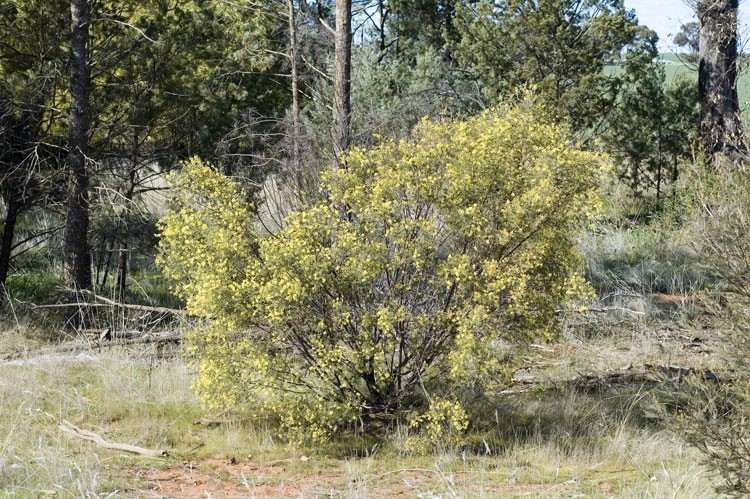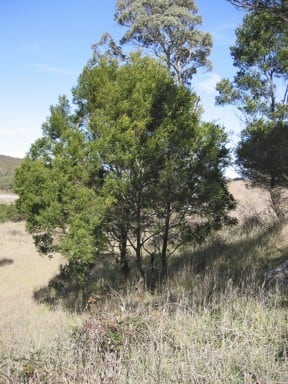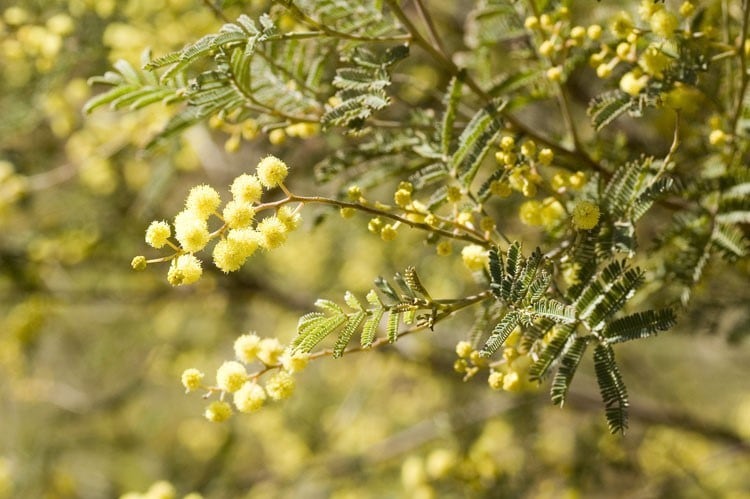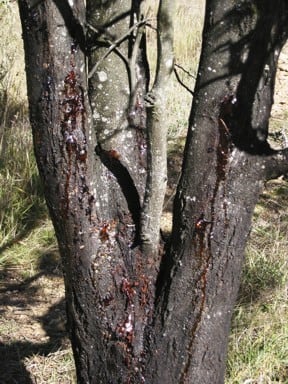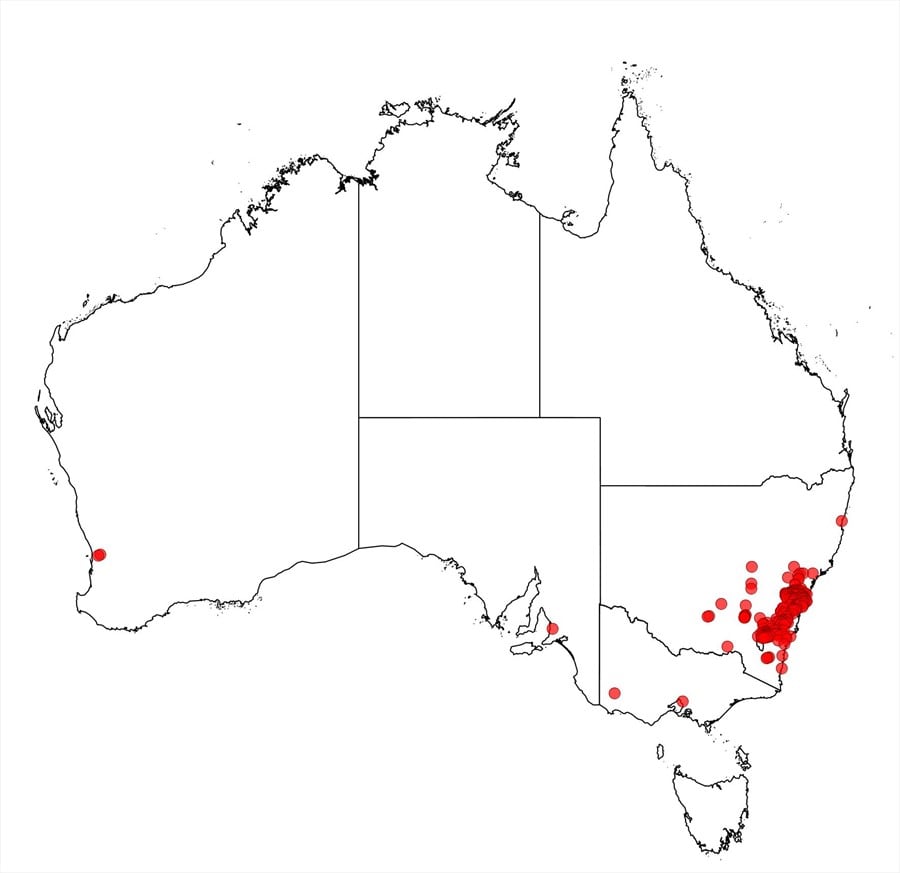Acacia parramattensis Tindale
WATTLE
Acacias of Australia
Common Name
Sydney Green Wattle, Parramatta Wattle
Family
Fabaceae
Distribution
Occurs in N.S.W. chiefly from Yengo S to Tumut and W to Grenfell; common in Sydney and Canberra (A.C.T.); possibly naturalised in Tas. and areas of N.S.W.; often cultivated.
Description
Shrub or tree to 15 m high. Bark smooth or fissured, black, brown or green. Branchlets almost terete or slightly angular, with ridges, appressed-puberulous with grey, white or yellow hairs, glabrescent, non-pruinose. Young foliage-tips yellow, velvety-pubescent. Leaves subcoriaceous, dark green; petiole above pulvinus (0.5–) 1–2.3 cm long, with a glabrous or sparsely puberulous gland at base of (or to 5 mm below) lowest pair of pinnae; rachis (1.5–) 3.5–11 cm long, with a depressed-oblong or depressed-spherical gland at the base of each pair of pinnae, sometimes with 1 or rarely 2 smaller interjugary glands between pairs; pinnae (3–) 6–16 pairs, (1.5–) 2.5–6 cm long; pinnules (14–) 20–40 (–62) pairs, ± narrowly oblong to very narrowly oblong, 2–7 (–9) mm long, 0.5–1 mm wide, glabrous except along margins, broadly rounded or subacute apically. Inflorescences rarely in axillary racemes, mostly in terminal or axillary false-panicles; peduncles 3–8 mm long, appressed-hairy to ±glabrous. Heads 20–50-flowered, pale yellow to bright yellow. Pods submoniliform, ±flat, 2.5–11 cm long, 3.5–8 mm wide, coriaceous, black or brown, grey-puberulous, glabrescent.
Phenology
Flowers Nov.–Apr.; fruits Nov.–Feb.
Habitat
Grows in open forest or woodland, chiefly on shale, also on other formations.
Specimens
N.S.W.: 13.7 km N of Goulburn, M.Evans 2779 (A, AD, CANB, CHR, K, NSW); ½ mile [0.8 km] S of Maroota turnoff to McGrath’s Hill, 8 Oct. 1960, M.D.Tindale s.n. (NSW); near Deepwell Stn, 12 miles [19.3 km] N of Marulan, M.D.Tindale s.n. (NSW84596); near Glen Fergus on the Umaralla road, M.D.Tindale 4023, M.Parris & D.Wimbush (CANB, NSW, P, Z). A.C.T.: Canberra, R.Pullen 8734 (CANB, NSW).
Notes
Allied to A. mearnsii in which the pinnules are densely hairy on the lower surface and the branchlets are velvety-pubescent. Similar to A. decurrens, which has decurrent petioles with the high ribs on the branchlets continuous with the rib on the underside of the petiole, and also to A. parvipinnula.
Information on the biological and ecological features, and the utilisation potential, of this species is given in B.R.Maslin and M.W.McDonald, AcaciaSearch: Evaluation of Acacia as a woody crop option for southern Australia, RIRDC Publication No. 03/017, 154–158 (2004).
FOA Reference
Data derived from Flora of Australia Volumes 11A (2001), 11B (2001) and 12 (1998), products of ABRS, ©Commonwealth of Australia
Author
M.D.Tindale, P.G.Kodela
This identification key and fact sheets are available as a mobile application:
URL: https://apps.lucidcentral.org/wattle/
© Copyright 2018. All rights reserved.
